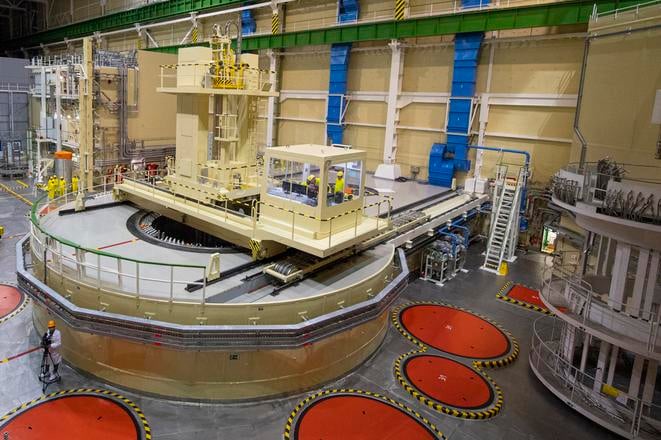Nuclear energy already accounts for the lion’s share of Slovakia’s energy mix, and is set to increase further. Completion of the fourth reactor at the Mochovce nuclear plant – expected next year – will mean that Slovakia can cover as much as 75 percent of its national energy consumption from nuclear power. To satisfy expected increased demand to decarbonise Slovak industry, the country is planning to build another large nuclear power plant and is also eyeing small modular reactors.
“Having one’s own resources is also a power and strategic issue. Times will only get worse, never better, and a country with technologies that generate electricity will be able to survive those tough times,” Prime Minister Robert Fico said prior to a visit by Slovak officials, including Economy Minister Denisa Saková, to South Korea in late September.
Saková believes that the completion of the third reactor in Mochovce last year, and the expected completion of the fourth reactor at the site next year, will mean that Slovakia will have one of the most ecological energy mixes in the world in terms of CO2 emissions.
“I think nuclear energy is the way of the future and the first ever nuclear summit in Brussels in March confirmed that,” she said, highlighting a recent shift in many governments’ stance on nuclear power. “A few years ago, it was unthinkable that such a meeting would take place; now there were countries not only from Europe but from all over the world.”
Demand to rise
Demand for electricity is expected to at least double in Slovakia by 2050.
Electricity in Slovakia
Last year, Slovakia consumed 26.5 TWh of electricity, according to data from the Slovak Electricity Transmission System (SEPS), the state-owned joint-stock company responsible for the operation of the transmission system.
Electricity production rose significantly year-on-year in 2023 to 29.9 TWh, mainly thanks to the launch of the third reactor belonging to the Mochovce nuclear power plant. Slovenské Elektrárne’s five nuclear reactors generated almost two-thirds (18.3 TWh) of the total.



